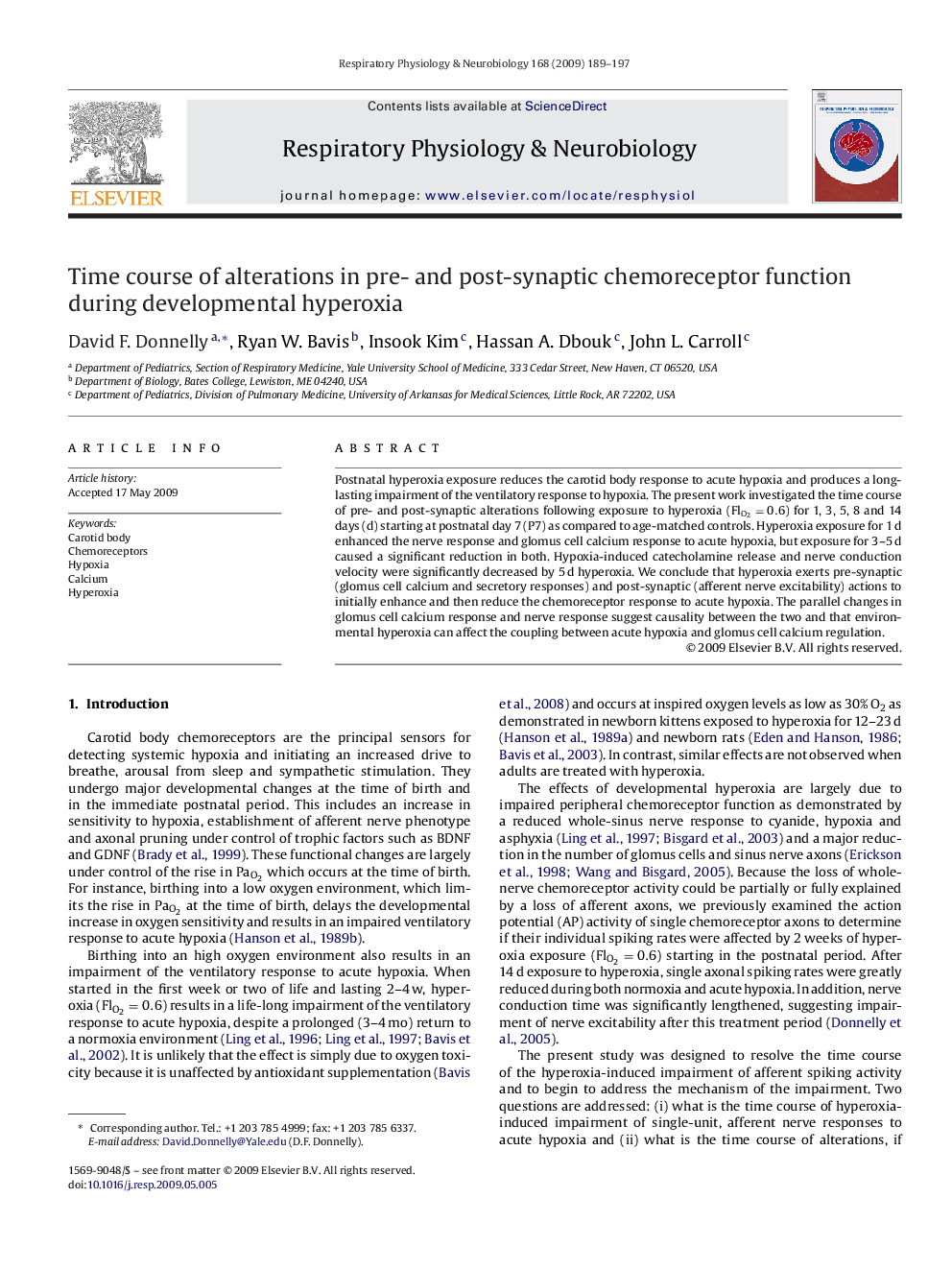| Article ID | Journal | Published Year | Pages | File Type |
|---|---|---|---|---|
| 2847911 | Respiratory Physiology & Neurobiology | 2009 | 9 Pages |
Abstract
Postnatal hyperoxia exposure reduces the carotid body response to acute hypoxia and produces a long-lasting impairment of the ventilatory response to hypoxia. The present work investigated the time course of pre- and post-synaptic alterations following exposure to hyperoxia (FlO2=0.6) for 1, 3, 5, 8 and 14 days (d) starting at postnatal day 7 (P7) as compared to age-matched controls. Hyperoxia exposure for 1Â d enhanced the nerve response and glomus cell calcium response to acute hypoxia, but exposure for 3-5Â d caused a significant reduction in both. Hypoxia-induced catecholamine release and nerve conduction velocity were significantly decreased by 5Â d hyperoxia. We conclude that hyperoxia exerts pre-synaptic (glomus cell calcium and secretory responses) and post-synaptic (afferent nerve excitability) actions to initially enhance and then reduce the chemoreceptor response to acute hypoxia. The parallel changes in glomus cell calcium response and nerve response suggest causality between the two and that environmental hyperoxia can affect the coupling between acute hypoxia and glomus cell calcium regulation.
Related Topics
Life Sciences
Biochemistry, Genetics and Molecular Biology
Physiology
Authors
David F. Donnelly, Ryan W. Bavis, Insook Kim, Hassan A. Dbouk, John L. Carroll,
